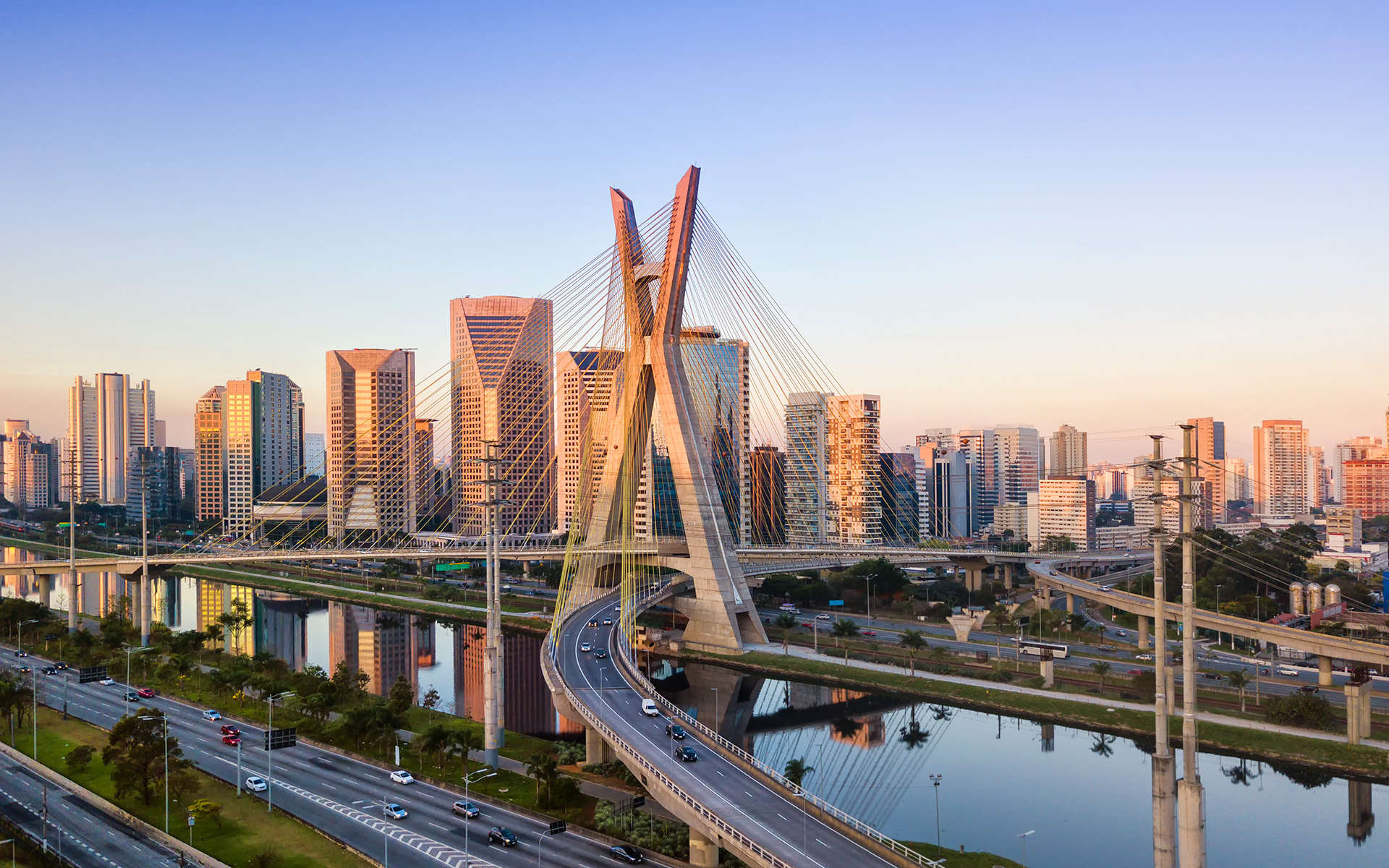São Paulo is a well-developed commercial hub with a diverse industrial base, flair for innovation, and growing South-South ties that are to its benefit.
City Class Score
| Commercial Hubs | |
| Export Champions | |
| Mobility Connectors | |
| Climate Resilient |
Corporate HQs, MNC presence, branded outlets, hotels, manufacturing, start-up ecosystem,
transport linkages, population, and income.
Go to the class information
Manufacturing, industrial parks, export share and share change by category, air and port
infrastructure, freight time to market, trade agreements, and expert interviews.
Go to the class information
Passenger traffic, flight connectivity, air-cargo flights, port infrastructure, container
ship sailings, and major road networks.
Go to the class information
Coastal and river flooding, extreme rain, extreme heat and humidity, cyclones, and water
scarcity.
Go to the class information
São Paulo has it all — bustling streets, soaring highrises, and a treasure trove
of cultural delights that include a vibrant live music scene and the São Paulo Museum of Art, an
architectural marvel perched on striking red stilts. People-watching in this dynamic city is an
attraction in its own right, and there’s no better place to see it all than in Ibirapuera Park, a
sprawling 400 acres of lush greenery where locals gather to unwind, juggle footballs, or enjoy
openair concerts.
As a commercial hub, São Paulo is set to thrive amid global growth
rebalancing, with increasing connectivity to other major emerging markets. During the past two
decades, Chinese business activity in the city has steadily risen, serving as just one indicator of
evolving South-South connections. Investment from the Middle East in Brazil is also robust. Although
São Paulo has benefited less from global supply chain shifts than countries like Mexico or Vietnam,
its diverse manufacturing base positions it well to capture a larger share should global trade
disruptions accelerate.
The sheer scale of São Paulo is one reason it ranks high as a
commercial powerhouse. With a population exceeding 20 million, it stands among the five most
populous cities in the world. The city contributes a remarkable 10% of Brazil’s GDP and is home to
over 150 listed companies — more than any other city in South America. Flight connectivity to both
regional and global destinations is strong, even if it trails behind some aviation hubs in Central
America. Nonetheless, São Paulo’s international airport serves more passengers than any other
regional competitor, highlighting Brazil’s commercial scale and the city’s significance as a
regional business center.
São Paulo’s industrial breadth shares much in common with cities
like Bangkok
and Istanbul.
Financial services, manufacturing, and tourism are all strong, contributing to the city’s
importance. São Paulo also has a reputation as a regional innovation powerhouse. It is home to more
than 10 unicorns across the fintech, e-commerce, and property technology spaces, and regularly ranks
high on global innovation indices. The city also benefits from a stronger climate resiliency profile
than some other commercial hubs on our list and is proactive in developing and investing in climate
resiliency plans.

